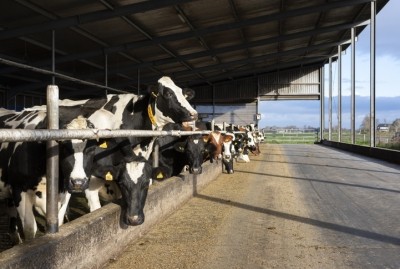Environment: AFIA outlines simple way US feed ingredient regulation can keep pace with global markets

It is only with those technologies in the marketplace that US farmers will be able to make the meaningful reductions in emissions that US policymakers are looking for, said the American Feed Industry Association (AFIA).
Paul Davis, director of quality, animal food safety, and education, AFIA, presenting at the US Department of Agriculture (USDA) Agricultural Outlook Forum last month, said that, part of the problem, is that novel feed ingredients in the US cannot include environmental claims on their labels due to the FDA’s very narrow interpretation for what is considered a food versus a drug.
Such a policy approach means certain ingredients have to go through the lengthy drug approval process, which is much longer than the average three-to-five years feed ingredients typically undergo for approval in animal diets, he reported.
The FDA needs to be expeditious in expanding label claims and getting those ingredients approved, argued Davis.
And regulatory changes in this respect don't have to be complicated, said the trade group. There is no need to modify the US Federal Food Drug and Cosmetic Act or US Food and Drug Administration (FDA) regulations, for example.
Just by updating guidance in the program policy and procedures manual of the Center for Veterinary Medicine (CVM), the FDA can “modernize its approach toward regulating claims for animal food ingredients and keep pace with science and the international community,” said the AFIA.
The CVM’s Guide 1240.3605 is less than a full five pages long, but “it packs a wallop in limiting permissible marketing claims” for animal food ingredient labels, according to that organization.
“It is time to broaden the regulatory roadway for animal food marketing claims to accommodate the expanded understanding of the physiology of the gastrointestinal tract. The CVM is long overdue in revisiting its narrow path for regulatory approval of animal food ingredients, and the public and food companies are starting to take notice,” added the AFIA.
In a blog post, the AFIA noted:
"Across continents and animal management systems, animal food additives are making their mark by fostering improvements for animal care and environmental protection. In many countries, animal food additives can be marketed for their benefits to animals by increasing performance, improving feed conversion and boosting the intestinal presence of immunoglobulins for mucosal health.
"But there is one notable gap on the globe with a large piece of unpainted canvas in the vibrant picture of opportunities provided by animal food additives. And that white spot hovers right over the US."
FDA ‘open’ to broadening stance
US agriculture secretary, Tom Vilsack, commented on the "increasing openness" of the FDA to think differently and broadly about its regulatory process for emerging technology at the Ag Outlook Forum, organized by the Agricultural Business Council of Kansas City, in September 2021.
“I think FDA is now open, more open, than they have been to conversations and hopefully that leads to not only the speeding up their current process but encouraging them to think differently and to think broadly.”
June last year also saw US senator, Tammy Baldwin, engage on the topic. He told a US senate committee group: “Other countries will be using this emissions-reduction technology four or five years earlier than we will be able to in the US, materially disadvantaging US farmers and ranchers in terms of export markets for beef and dairy products.”
Reducing environmental impact through formulation
“For now, the [US feed] industry is doing what it can to select and include feed ingredients in diets that can reduce environmental impacts in other ways, such as: using coproducts leftover from food and energy production to divert materials from landfills; increasing the bioavailability of ingredients; and selecting commodity ingredients based on their specific nutrient content for specific purposes.
“The industry is also working to understand how it can better process and formulate ingredients, adjust feeding systems and work with farmers and ranchers on improving basic animal husbandry, which could lead to more optimal uptake of nutrients and less environmental impact,” added the AFIA.








